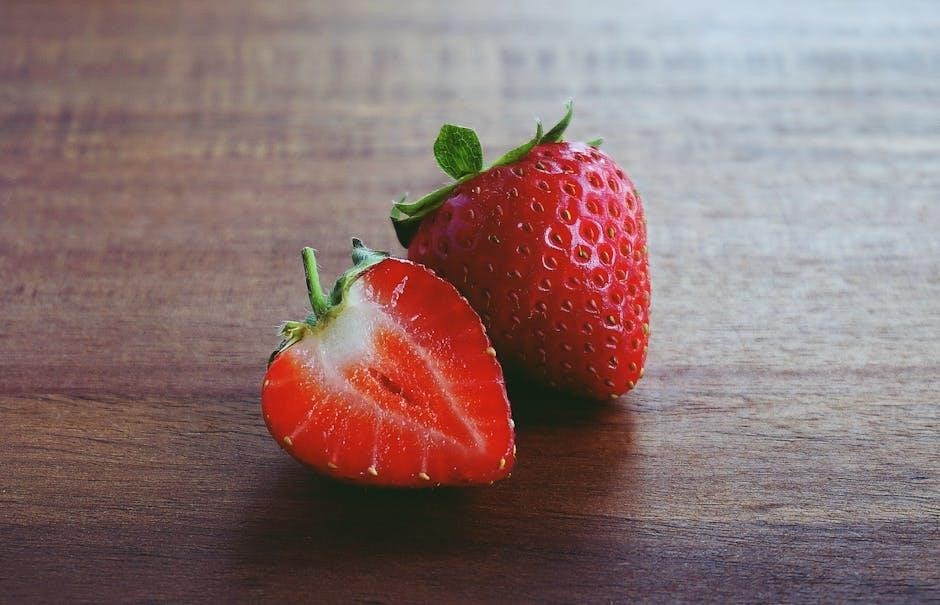The Plant Paradox, introduced by Dr. Steven Gundry, reveals how certain “healthy” foods contain lectins, which may cause inflammation and weight gain. His approach focuses on a lectin-free diet, divided into Yes and No food lists, helping individuals achieve better health and weight management. This program emphasizes nutrient-rich, lectin-free options, providing a clear guide for making informed dietary choices.
What is the Plant Paradox?
The Plant Paradox, developed by Dr. Steven Gundry, challenges conventional nutritional wisdom by identifying lectins as potential harmful compounds in otherwise healthy foods. Lectins, found in plants, can trigger inflammation, weight gain, and chronic diseases in some individuals. The diet advocates for a lectin-free lifestyle, categorizing foods into “yes” and “no” lists based on their lectin content. By eliminating high-lectin foods, the program aims to improve digestion, reduce inflammation, and promote weight loss. It emphasizes nutrient-dense, lectin-free alternatives, offering a structured approach to dietary choices. This paradigm shift in nutrition has gained popularity for its focus on addressing underlying causes of poor health through targeted food selection.
Dr. Steven Gundry and His Approach to Nutrition
Dr. Steven Gundry, a renowned cardiac surgeon and researcher, pioneered the Plant Paradox program, focusing on lectin-free eating. His approach challenges traditional dietary advice by identifying lectins in seemingly healthy foods as potential contributors to inflammation, weight gain, and chronic diseases. Gundry’s method emphasizes eliminating high-lectin foods and incorporating nutrient-rich, lectin-free alternatives. Through his books and resources, such as the Plant Paradox food list PDF, he provides practical tools for adhering to this diet. His program has garnered attention for its innovative perspective on nutrition, offering a structured pathway to improved health and well-being. Gundry’s work continues to influence dietary choices, promoting a lectin-aware lifestyle for optimal health outcomes.
The Concept of Lectin-Free Eating
Lectin-free eating, central to the Plant Paradox, focuses on eliminating foods containing harmful lectins, which Dr. Gundry links to inflammation, digestive issues, and weight gain. These proteins, found in plants, can disrupt gut health and immune function. By avoiding high-lectin foods like beans, grains, and certain vegetables, individuals can reduce potential damage. The diet advocates for low-lectin alternatives, such as leafy greens and select fruits, to promote better digestion and overall well-being. This approach is detailed in the Plant Paradox food list PDF, guiding followers on which foods to include and avoid, thereby supporting a balanced and lectin-aware diet for improved health outcomes.

Understanding the Plant Paradox Food List
The Plant Paradox Food List categorizes foods into “Yes” and “No” lists based on lectin content. It guides followers on lectin-free eating for optimal health and weight management.
What is the Yes List?
The Yes List in the Plant Paradox diet includes foods that are low in lectins or lectin-free, promoting better digestion and overall health. It features healthy fats, nuts, seeds, A2 dairy products, and select fruits and vegetables like leafy greens, cruciferous vegetables, and certain low-sugar fruits. Proteins such as grass-fed meats, wild-caught fish, and free-range eggs are also included. These foods are chosen for their ability to reduce inflammation and support weight loss. The list emphasizes organic, non-GMO options and provides a clear guide for making lectin-free choices. By focusing on these approved foods, followers of the Plant Paradox can enjoy a balanced diet while minimizing potential digestive discomfort. This list is regularly updated to reflect the latest research and dietary recommendations.
What is the No List?
The No List in the Plant Paradox diet identifies foods high in lectins, which may cause inflammation, digestive issues, and weight gain. These include legumes, grains, nightshades like tomatoes and peppers, and certain high-lectin fruits and vegetables. Dr. Gundry advises avoiding these foods, especially in the initial phases of the diet, to minimize potential harm. The list also excludes processed foods, sugary snacks, and unhealthy fats. By removing these items, the diet aims to reduce inflammation and promote better gut health. The No List is regularly updated in Dr. Gundry’s resources, such as his 2024 book Gut Check, ensuring followers have the most current guidance on avoiding problematic foods. This list is crucial for adhering to the lectin-free lifestyle.
Key Differences Between the Two Lists
The Yes List focuses on lectin-free foods, such as certain vegetables, lean meats, and healthy fats, promoting weight loss and reduced inflammation. In contrast, the No List includes high-lectin foods like beans, grains, and nightshades, which may harm health. The Yes List encourages organic, non-GMO choices, while the No List restricts processed and sugary items. These distinctions guide followers in making dietary choices aligned with Dr. Gundry’s lectin-free approach, ensuring they avoid harmful lectins while nourishing their bodies with beneficial foods. Regular updates in resources like the 2024 Gut Check book keep the lists current and effective for long-term health. This clear separation helps individuals maintain a balanced and lectin-aware diet.

Categories of Foods in the Plant Paradox Diet
The diet categorizes foods into proteins, fats, vegetables, fruits, dairy, and nuts/seeds, ensuring a balanced intake of lectin-free options. Each category provides specific guidelines.
Proteins: meats, fish, and eggs
The Plant Paradox diet emphasizes high-quality proteins, including grass-fed meats, wild-caught fish, and pasture-raised eggs. These protein sources are rich in nutrients and low in harmful lectins. Organ meats like liver are also encouraged for their high vitamin content. Fish such as salmon and sardines are particularly recommended due to their omega-3 fatty acids. Eggs from pasture-raised hens are preferred, as they have higher nutrient levels. Avoiding grain-fed and factory-farmed options is crucial, as they may contain higher levels of inflammatory compounds. Proper portion control and cooking methods are advised to maximize health benefits. Incorporating these proteins supports overall health and weight management.
Fats and Oils: healthy fats and oils
Healthy fats and oils play a vital role in the Plant Paradox diet, providing essential nutrients and supporting overall health. Dr. Gundry recommends incorporating lectin-free options like olive oil, avocado oil, and coconut oil, which are rich in antioxidants and anti-inflammatory properties. Additionally, MCT oil, macadamia nut oil, and walnut oil are encouraged for their high nutrient density. These fats are ideal for cooking and dressings, promoting satiety and energy. Avoid highly processed oils, such as sunflower and soybean oil, as they are high in omega-6 fatty acids, which can lead to inflammation. Proper portions of these healthy fats are crucial for maintaining a balanced and lectin-free diet.
Vegetables: lectin-free options
Lectin-free vegetables are a cornerstone of the Plant Paradox diet, offering nutrient-dense options that minimize potential inflammation. Dr. Gundry recommends focusing on leafy greens like spinach, kale, and arugula, as well as cruciferous vegetables such as broccoli, Brussels sprouts, and cauliflower. Celery, asparagus, and bell peppers are also excellent choices. These vegetables are naturally low in lectins and rich in vitamins, minerals, and antioxidants. They support digestive health and provide sustained energy. Avoid high-lectin vegetables like tomatoes, potatoes, and corn. Proper preparation, such as cooking or peeling, can further reduce lectin content. Incorporating these lectin-free vegetables into meals ensures a balanced and nutritious diet aligned with the Plant Paradox principles. Always opt for organic and non-GMO varieties when possible.
Fruits: low-lectin fruits
The Plant Paradox diet emphasizes selecting fruits that are low in lectins to minimize potential inflammation and support overall health. Avocados, often classified as a fruit, are a top choice due to their high fat content and minimal lectin levels. Berries such as blueberries, strawberries, and raspberries are also recommended for their low lectin content and high antioxidant properties. Kiwis, citrus fruits like oranges and grapefruits, and stone fruits like peaches and nectarines are additional low-lectin options. These fruits are rich in vitamins, fiber, and antioxidants, making them ideal for a lectin-free diet. Moderation is key, especially for those managing blood sugar levels. Always prioritize organic and non-GMO varieties to maximize benefits.
Dairy Products: A2 milk and other compliant options
Dairy products in the Plant Paradox diet are carefully selected to avoid lectins and promote gut health. A2 milk, sourced from specific breeds of cows, is a cornerstone of this category. It contains only the A2 beta-casein protein, which is easier to digest than the A1 protein found in most conventional milks. Additionally, certain cheeses like Swiss, goat cheese, and high-fat, low-lactose options are permissible in moderation. French or Italian butter and ghee are also compliant, as they are low in lactose and lectins. These dairy choices are rich in nutrients and support overall health without triggering inflammation. Always opt for organic and non-GMO varieties to maximize benefits.
Nuts and Seeds: compliant varieties
The Plant Paradox diet approves specific nuts and seeds that are low in lectins and rich in nutrients. Almonds, particularly blanched, are a popular choice, as are Baruka nuts, Brazil nuts (limited to two per day), and macadamia nuts. Coconut, flaxseeds, and hemp seeds are also included, providing healthy fats and fiber. Nut butters made from compliant nuts, unsweetened and in moderation, are permitted. Sesame seeds and Tahini are allowed, offering unique flavors and nutritional benefits. These options are not only delicious but also support overall health and energy levels. Always ensure moderation, as even compliant nuts and seeds can be calorie-dense. Proper portion control is key to reaping their benefits without overconsumption.
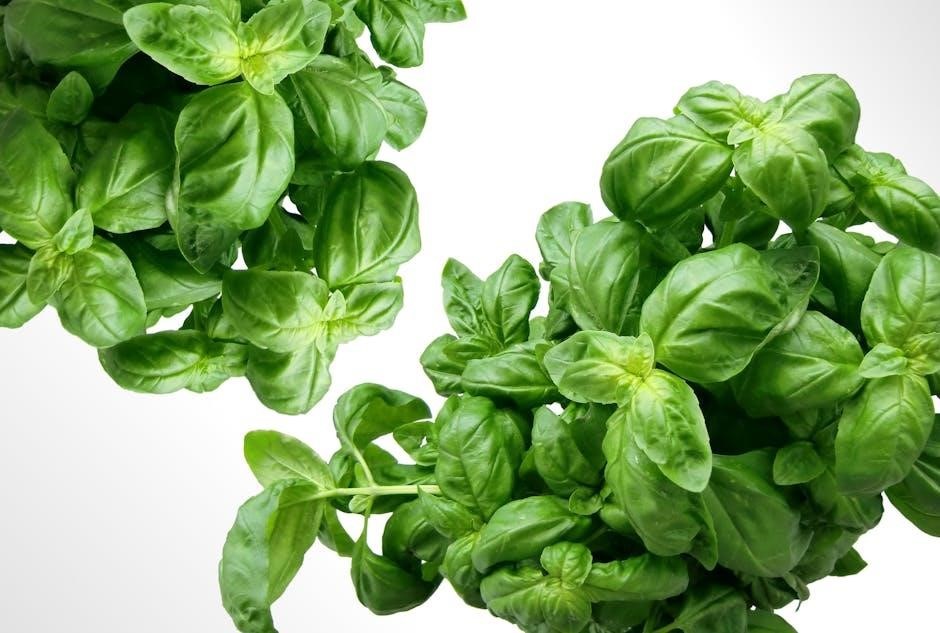
Phase-Specific Foods in the Plant Paradox Program
The program divides foods into phases: Detox and Reset, Reintroduction, and Long-Term Maintenance. Each phase tailors food choices to support detoxification, gradual reintroduction, and sustained health.
Foods for Phase 1: Detox and Reset
Phase 1 focuses on eliminating harmful lectins and resetting digestion. Permitted foods include leafy greens like spinach and kale, cruciferous vegetables such as broccoli, and low-lectin options like avocados and olive oil. Proteins are limited to wild-caught fish and pasture-raised meats, while nuts like almonds and macadamias are allowed in moderation. Fermented foods and non-starchy vegetables are also encouraged to support gut health. This phase avoids all grains, legumes, and high-sugar fruits, promoting a clean start for the body. The goal is to reduce inflammation and prepare the digestive system for subsequent phases. Adherence to these guidelines helps jumpstart the detox process effectively.
Foods for Phase 2: Reintroduction
Phase 2 introduces a gradual reintroduction of select foods to assess tolerance. Low-lectin fruits like berries and citrus are added, along with small portions of A2 dairy products such as goat cheese and yogurt. Some gluten-free grains and starchy vegetables, like sweet potatoes, are cautiously reintroduced. Lean proteins remain central, while nuts and seeds are expanded, including pistachios and flaxseeds. The focus is on monitoring bodily reactions to identify sensitivities. This phase helps determine individual tolerance levels, allowing for a more personalized diet. It’s crucial to reintroduce foods slowly and observe any adverse effects, ensuring a balanced and sustainable approach to eating. This phase transitions the body from detox to a more varied diet.
Foods for Phase 3: Long-Term Maintenance
Phase 3 focuses on long-term maintenance, where the diet becomes more flexible while still prioritizing lectin-aware eating. Emphasis is placed on sustaining weight loss and overall health. Foods from the Yes List are freely enjoyed, with occasional small portions of lectin-containing foods if tolerated; Low-sugar fruits, cruciferous vegetables, and select whole grains are encouraged. Moderate portions of A2 dairy, nuts, and seeds are allowed. The diet promotes high-fiber, nutrient-dense meals, with an emphasis on organic and non-GMO choices. This phase is about maintaining balance and flexibility, ensuring long-term adherence to a lectin-free lifestyle. It’s designed to support sustained energy, digestion, and overall well-being.
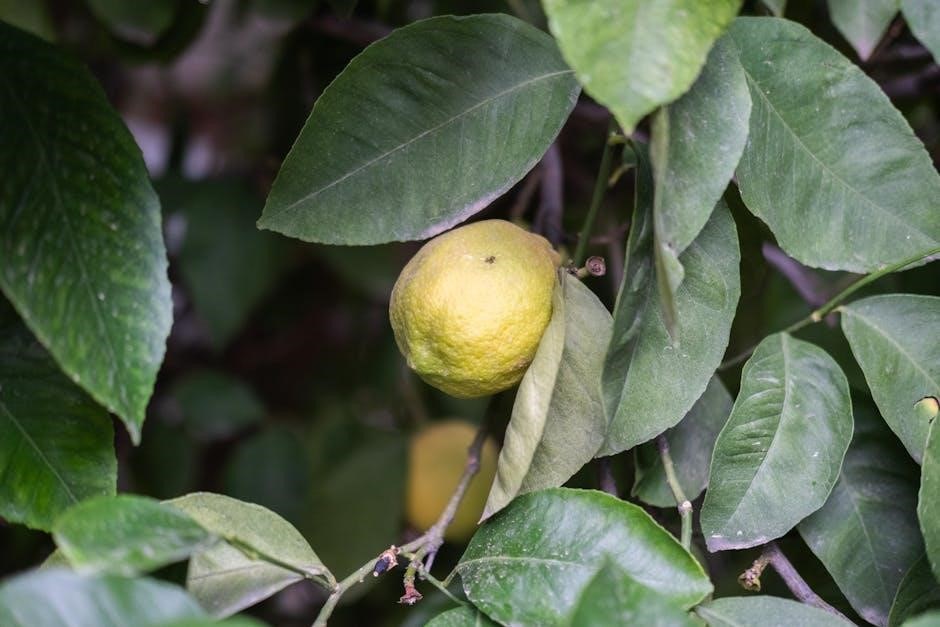
Benefits of the Plant Paradox Diet
The Plant Paradox Diet promotes weight loss, improves metabolism, and reduces inflammation. It enhances energy levels and supports better digestion, fostering overall health and well-being.
Weight Loss and Improved Metabolism
The Plant Paradox Diet is renowned for its ability to promote weight loss and enhance metabolic function. By eliminating lectin-rich foods, the body reduces inflammation and metabolic slowdown. This dietary approach focuses on increasing healthy fats, proteins, and select vegetables, which help regulate hunger hormones and boost energy levels. Many followers report significant weight loss, particularly in stubborn areas like the midsection. Improved insulin sensitivity and a faster metabolism further support long-term weight management. The diet’s emphasis on nutrient-dense, lectin-free foods ensures sustained energy and a healthier relationship with food, making it easier to maintain weight loss over time. This approach has been transformative for many seeking to improve their metabolic health.
Reduced Inflammation and Improved Digestion
The Plant Paradox Diet focuses on reducing inflammation by eliminating lectin-rich foods, which are known to trigger inflammatory responses. Lectins can disrupt the gut lining, leading to digestive issues and chronic inflammation. By adhering to the Yes List, which includes lectin-free options, individuals often experience improved digestion and reduced bloating. The diet also promotes the healing of the gut microbiome, enhancing nutrient absorption and overall digestive health. Many followers report fewer symptoms of irritable bowel syndrome and other digestive disorders. This anti-inflammatory approach not only benefits the gut but also supports overall well-being, making it a popular choice for those seeking to alleviate digestive discomfort and reduce systemic inflammation.

Enhanced Energy Levels
The Plant Paradox Diet is designed to boost energy levels by eliminating lectin-rich foods that can cause inflammation and metabolic slowdown. By focusing on lectin-free, nutrient-dense options from the Yes List, such as leafy greens, healthy fats, and select proteins, the body is able to optimize energy production. Many followers report increased vitality as their digestive systems improve and inflammation subsides. The diet also emphasizes the importance of balancing macronutrients, which helps stabilize blood sugar levels and prevent energy crashes. This approach not only supports long-term energy but also enhances overall metabolic function, making it easier to maintain a active and vibrant lifestyle.
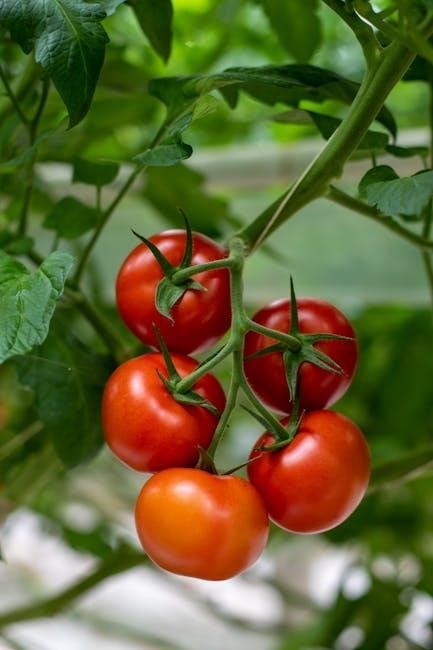
Criticisms and Controversies
The Plant Paradox has faced criticism for its restrictive nature and lack of robust scientific evidence supporting lectin-free diets. Some experts argue that it unnecessarily limits nutritious foods.
Debates on Lectin-Free Diets
The Plant Paradox diet has sparked significant debate regarding the validity of lectin-free eating. While Dr. Gundry claims lectins cause inflammation and weight gain, some scientists argue that cooking and proper preparation can neutralize these compounds. Critics also point out that many lectin-containing foods, like legumes, are nutrient-dense and have proven health benefits. The restrictive nature of the diet has raised concerns about potential nutrient deficiencies. Additionally, the lack of long-term studies supporting the diet’s effectiveness has led to skepticism within the scientific community. Despite this, many followers report positive results, creating a divide between anecdotal success and scientific consensus.
Criticisms from the Scientific Community
The Plant Paradox diet has faced criticism from the scientific community for its restrictive approach and lack of robust evidence. Many experts argue that lectins, while potentially problematic in large quantities, are not inherently harmful and can be neutralized through cooking. The diet’s emphasis on eliminating entire food groups, such as legumes and whole grains, has raised concerns about nutrient deficiencies and the limitations of such a narrow dietary approach. Additionally, critics highlight the absence of long-term studies supporting the diet’s claims, questioning its sustainability and overall health benefits. Some also point to potential conflicts of interest, as Dr. Gundry promotes his own line of lectin-free products. These criticisms underscore the need for a balanced perspective when considering the Plant Paradox diet.
Consumer Feedback and Experiences
Many consumers who have adopted the Plant Paradox diet report positive outcomes, such as weight loss, improved digestion, and reduced inflammation. Some individuals appreciate the structured approach of the Yes and No lists, finding it easier to make dietary decisions. However, others find the diet overly restrictive, particularly in social settings or when dining out. Critics mention the high cost of compliant foods and the difficulty of maintaining the diet long-term. While some users praise the variety of recipes and resources provided, others express frustration with the constant need to monitor lectin intake. Overall, experiences vary widely, with some swearing by the diet’s benefits and others finding it unsustainable.

Implementing the Plant Paradox Diet
The Plant Paradox diet can be effectively implemented using Dr. Gundry’s downloadable PDF food list, which categorizes foods into “yes” and “no” options. This guide simplifies meal planning.
How to Shop for Lectin-Free Foods
Shopping for lectin-free foods requires careful selection using Dr. Gundry’s food list. Focus on organic, non-GMO options, and avoid high-lectin fruits and vegetables. Choose grass-fed meats, wild-caught fish, and compliant dairy like A2 milk. Incorporate healthy fats such as olive oil and avocado oil. Nuts and seeds like almonds and macadamia nuts are allowed in moderation. Always refer to the Plant Paradox food list PDF for guidance on approved products. This ensures adherence to the diet and maximizes benefits, helping to reduce inflammation and improve overall health.
Meal Planning and Recipes
Meal planning on the Plant Paradox diet involves creating balanced, lectin-free meals using Dr. Gundry’s food list. Start with Phase 1, focusing on detox and resetting your metabolism. Incorporate leafy greens, low-lectin vegetables, and proteins like grass-fed meats or wild-caught fish. Use healthy fats such as olive oil and avocado oil for cooking. For variety, explore recipes like cauliflower rice, zucchini noodles, or lectin-free stir-fries. Dr. Gundry provides a wealth of recipes and meal ideas in his resources, making it easier to stay compliant. Planning meals in advance ensures consistency and helps avoid lectin-containing foods, promoting long-term health benefits.
Tips for Sticking to the Diet
Sticking to the Plant Paradox diet requires commitment and strategic planning. Start by printing the lectin-free food list PDF and referencing it regularly to ensure compliance. Meal prepping is key—plan your weekly meals using approved ingredients to avoid last-minute decisions. Stock your pantry with lectin-free staples like olive oil, nuts, and seeds. When dining out, opt for grilled meats, fish, and steamed vegetables, avoiding sauces and grains. Stay hydrated and incorporate physical activity to support metabolism. Join online communities or forums for motivation and recipe ideas. Consistency is crucial, so focus on progress rather than perfection. Over time, your body will adapt, making the diet easier to maintain.
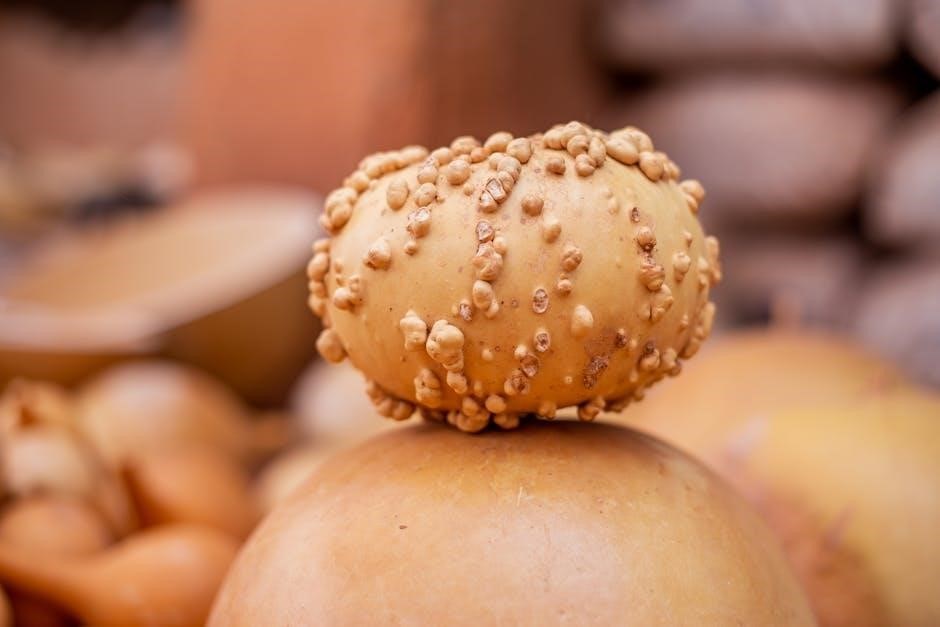
Additional Resources
Download the Plant Paradox Food List PDF for a comprehensive guide to lectin-free eating. Access Dr. Gundry’s food pyramid and printable shopping lists for easy reference.
Downloading the Plant Paradox Food List PDF
The Plant Paradox Food List PDF is a comprehensive guide to lectin-free eating, categorizing foods into “Yes” and “No” lists. It includes detailed recipes, meal plans, and Dr. Gundry’s food pyramid for easy reference. The PDF is regularly updated, such as the 2024 version from Dr. Gundry’s book Gut Check, ensuring the latest research and recommendations. Users can download it for free from various sources, including Dr. Gundry’s official website. The PDF is printable, making it a handy tool for grocery shopping and meal planning. It simplifies the lectin-free diet by providing clear, organized information to help individuals make informed food choices.

Dr. Gundry’s Food Pyramid
Dr. Gundry’s Food Pyramid is a visual guide within the Plant Paradox program, categorizing foods based on their lectin content and health benefits. Level 1, the base, includes unrestricted lectin-free foods like leafy greens and healthy fats. Level 5, the top, lists foods to consume sparingly, such as certain high-lectin plant-based options. The pyramid emphasizes organic, non-GMO choices, aligning with Dr. Gundry’s focus on reducing inflammation and promoting weight loss. It is included in the downloadable Plant Paradox PDF resources, alongside shopping lists and recipes, making it an essential tool for adhering to the lectin-free lifestyle. The pyramid simplifies decision-making, helping users prioritize nutrient-dense, anti-inflammatory foods.
Printable Shopping Lists and Guides
Dr. Gundry’s printable shopping lists and guides are essential tools for adhering to the Plant Paradox diet. Available as downloadable PDFs, these resources categorize foods into Yes and No lists, making grocery shopping straightforward. They include specific items like lectin-free vegetables, compliant nuts, and approved dairy products. The guides also provide meal planning tips and phase-specific advice, ensuring users stay on track during detox, reintroduction, and maintenance stages. Additionally, the lists are organized according to Dr. Gundry’s food pyramid, offering a clear hierarchy of food choices. These printable resources are designed to simplify the transition to a lectin-free lifestyle, helping users avoid harmful lectins while enjoying nutrient-rich meals. They are a practical complement to the Plant Paradox program, making it easier to implement dietary changes effectively.
